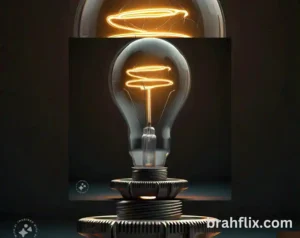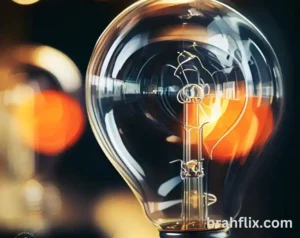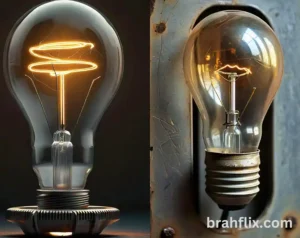Introduction
The invention of the light bulb marks a pivotal moment in human history, transforming the way we live and work. But who invented the first light bulb? This question delves into a rich history of innovation, competition, and scientific breakthroughs. This article provides an in-depth exploration of the journey leading to the creation of the light bulb, the key inventors involved, and the technological evolution that followed.
Key Takeaways:
- The invention of the light bulb is attributed to several key inventors.
- Thomas Edison is widely credited with the first practical light bulb.
- Other inventors, like Joseph Swan and Hiram Maxim, played significant roles.
- The development of the light bulb involved numerous innovations and improvements over time.
1. The Historical Context of the Light Bulb
Understanding the invention of the light bulb requires an exploration of the broader historical context. Before the advent of electric lighting, people relied on gas lamps, candles, and oil lamps to illuminate their homes and streets. The transition from these traditional sources to electric lighting was driven by the need for a more efficient, safer, and longer-lasting illumination method.
Early Lighting Methods
- Candles: Made from tallow or beeswax, candles were common but had limited brightness and efficiency.
- Oil Lamps: Used various oils, such as whale oil, providing a steadier light but still requiring regular maintenance and refueling.
- Gas Lamps: Introduced in the early 19th century, these lamps used coal gas and provided a brighter and more reliable light but posed safety hazards.
The push for a more effective lighting solution led to numerous experiments and innovations, culminating in the invention of the light bulb.
2. Key Figures in the Invention of the Light Bulb
The invention of the first light bulb was not the result of a single person’s efforts but a collaborative process involving several inventors. Here are the prominent figures who contributed significantly to this groundbreaking development:
Thomas Edison
- Contribution: Edison’s work in the late 19th century led to the creation of the first practical and long-lasting light bulb.
- Key Innovations: Edison’s improvements included a high-resistance carbon filament, an improved vacuum inside the bulb, and a reliable electrical distribution system.
- Impact: Edison’s invention was pivotal in making electric lighting commercially viable and accessible.
Joseph Swan
- Contribution: Swan, a British inventor, developed an early version of the incandescent light bulb around the same time as Edison.
- Key Innovations: Swan’s bulb used a carbonized paper filament and an improved vacuum, similar to Edison’s design.
- Impact: Swan’s work led to the establishment of the first electric lighting system in the UK and a partnership with Edison.
Hiram Maxim
- Contribution: Maxim, an American inventor, developed a competing version of the light bulb with a platinum filament.
- Key Innovations: Maxim’s bulb was less practical due to the high cost of platinum but demonstrated alternative approaches to filament materials.
- Impact: Maxim’s contributions highlighted the ongoing experimentation in the field.
Other Influential Figures
- Heinrich Göbel: German inventor who claimed to have developed an incandescent bulb before Edison and Swan.
- William Sawyer: Noted for his contributions to the development of electric lighting systems and patents related to the light bulb.
3. The Scientific Principles Behind the Light Bulb
To fully appreciate the invention of the first light bulb, it’s essential to understand the scientific principles that made it possible. The light bulb operates on the principles of incandescence, where electrical current heats a filament to produce light.
Incandescence Explained
- Definition: Incandescence is the emission of light from a hot object. In the case of a light bulb, an electric current passes through a filament, heating it until it glows.
- Filament Materials: Early bulbs used carbon filaments, while later designs incorporated tungsten due to its higher melting point and durability.
Electrical Current and Filament Design
- Electrical Current: The flow of electric current through the filament generates heat, which in turn produces light.
- Vacuum: A vacuum inside the bulb prevents the filament from burning out too quickly by eliminating oxygen, which would otherwise cause oxidation.
4. The Development of the Practical Light Bulb
The practical light bulb that revolutionized lighting came through a series of iterative improvements and refinements. This section explores the key developments that led to the creation of a commercially viable light bulb.
Early Prototypes and Challenges
- Initial Designs: Early prototypes faced challenges such as short lifespan, low brightness, and high production costs.
- Material Improvements: Advances in filament materials, such as carbonized bamboo and tungsten, addressed many of these issues.
Edison’s Breakthrough
- Carbon Filament: Edison’s development of a carbon filament that lasted over 1,200 hours marked a significant improvement over previous designs.
- Vacuum Technology: Edison’s use of a high-quality vacuum inside the bulb helped extend the lifespan of the filament.
Commercialization and Impact
- Mass Production: Edison’s system for mass-producing light bulbs and electrical infrastructure made electric lighting widely available.
- Global Adoption: The practical light bulb quickly gained acceptance, leading to the widespread adoption of electric lighting around the world.
5. The Evolution of Light Bulb Technology
The evolution of light bulb technology has continued beyond Edison’s initial invention, with significant advancements in materials, efficiency, and design.
Incandescent to Fluorescent
- Incandescent Bulbs: Initially dominant, incandescent bulbs have been largely replaced due to their inefficiency and heat production.
- Fluorescent Bulbs: Introduced in the mid-20th century, fluorescent bulbs offer greater efficiency and longer lifespans compared to incandescent bulbs.
LED Technology
- LEDs (Light Emitting Diodes): Modern LED technology provides even greater efficiency, longer lifespans, and reduced environmental impact.
- Advancements: LED technology continues to evolve, offering a range of lighting options from traditional bulbs to advanced smart lighting systems.
6. The Impact of the Light Bulb on Society
The invention of the light bulb had profound effects on society, transforming daily life, industry, and urban development.
Changes in Daily Life
- Extended Productive Hours: Electric lighting allowed for extended working hours and increased productivity in various fields.
- Improved Safety: The safety and reliability of electric lighting reduced reliance on open flames and hazardous gas lamps.
Urban Development
- City Illumination: The widespread adoption of electric street lighting contributed to the growth and development of modern cities.
- Economic Impact: The light bulb spurred economic growth through the development of new industries and technologies.
7. Key Figures in the Patent Wars
The development of the light bulb was marked by intense competition and patent disputes among key inventors.
Edison’s Patent Battles
- Legal Disputes: Edison faced numerous legal challenges from other inventors and companies claiming to have developed similar technologies.
- Resolution: Many disputes were settled through legal battles, often leading to partnerships or licensing agreements.
Swan’s Legal Challenges
- Patent Conflicts: Swan’s patents for the incandescent bulb led to legal conflicts with Edison, eventually resulting in a collaboration between the two inventors.
Impact on Innovation
- Encouraging Competition: The patent disputes highlighted the competitive nature of technological development and encouraged further innovation.
8. The Role of Inventors in the Light Bulb’s Success
While Edison is often credited with the invention of the first light bulb, the contributions of various inventors were crucial to its success.
Collaboration and Competition
- Collaborative Efforts: The partnership between Edison and Swan demonstrated the importance of collaboration in advancing technology.
- Competitive Spirit: The competition among inventors drove improvements and refinements in light bulb technology.
Legacy of Innovation
- Continued Influence: The pioneering work of these inventors set the stage for ongoing advancements in lighting technology.
- Inspirational Figures: The stories of these inventors serve as inspiration for future innovators in various fields.
Frequently Asked Questions
1. Who was the first person to invent the light bulb?
While Thomas Edison is often credited with inventing the first practical light bulb, other inventors like Joseph Swan also played significant roles in its development.
2. What were the main challenges faced in early light bulb development?
Early challenges included short filament lifespans, low brightness, high production costs, and the need for effective vacuum technology.
3. How did Edison’s light bulb differ from earlier designs?
Edison’s light bulb featured a high-resistance carbon filament, an improved vacuum inside the bulb, and a comprehensive electrical distribution system.
4. What are the main types of light bulbs used today?
Modern light bulbs include incandescent, fluorescent, halogen, and LED types, each offering different levels of efficiency and lifespan.
5. How did the invention of the light bulb impact society?
The light bulb revolutionized daily life, increased productivity, improved safety, and contributed to the growth and development of modern cities.
Conclusion
The invention of the first light bulb is a testament to human ingenuity and collaboration. While Thomas Edison is often celebrated for his contributions, the roles played by inventors like Joseph Swan and Hiram Maxim were also crucial to the development of electric lighting. The evolution of the light bulb from its early prototypes to modern LED technology reflects ongoing advancements in science and technology